The Static Inbox is Dead. Welcome to the Future of Holiday Shopping
The holiday season isn’t just busy, it’s make-or-break for ecommerce brands. Accounting for up to 30% of annual retail sales and generating over $1.2 trillion in global online spending, this period defines winners and laggards in retail. Yet, the inbox has become one of the most competitive battlegrounds. Consumers receive an average of 120+ marketing emails per day in December, and engagement rates hit their annual low as inbox fatigue sets in.
Sending another static, one-size-fits-all email in this environment isn’t just ineffective, it’s a fast track to the spam folder. Traditional email campaigns still rely on a clunky path to purchase: Email → Website → Product Page → Cart → Checkout. Every extra click adds friction, and every second of delay risks losing a ready-to-buy customer.
This Christmas, it’s time to transform your emails from simple brochures into dynamic, interactive storefronts. By leveraging the power of Shoppable Emails and embracing hyper-personalization, brands can create frictionless, real-time shopping experiences directly within the inbox. This strategy can lead to higher conversion rates compared to static emails. This ultimate guide will show you how to combine these cutting-edge strategies to maximize your conversions, average order value (AOV), and customer delight this festive season.
The Game-Changer: Turning Emails into Interactive Storefronts
AMP for Email is the foundational technology that makes the “shopper-in-the-inbox” concept a reality. It allows you to embed sophisticated, interactive components that traditionally only existed on a website, effectively bypassing the need for an immediate click-out.
What is AMP for Email and Why Does it Matter for Christmas?
AMP is an open-source framework developed by Google that enables a highly interactive, near-instantaneous experience within compatible email clients (primarily Gmail, Yahoo Mail, and Mail.ru). It effectively creates a mini-web application right in the user’s inbox, loaded with live data.
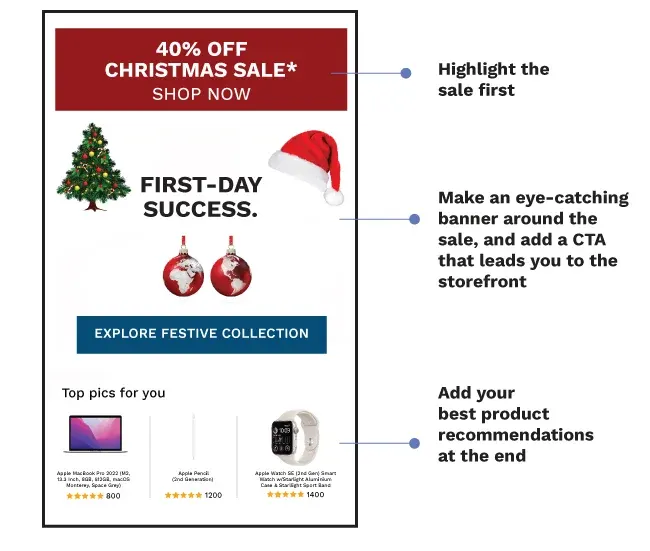
Key Conversion Advantages:
1. Frictionless Shopping: The biggest advantage is the reduction of clicks. Customers can now browse, filter, select options, configure products, check inventory, and even trigger an “Add to Cart” API call without ever leaving the email. This instant gratification is a powerful conversion driver, especially for busy holiday shoppers.
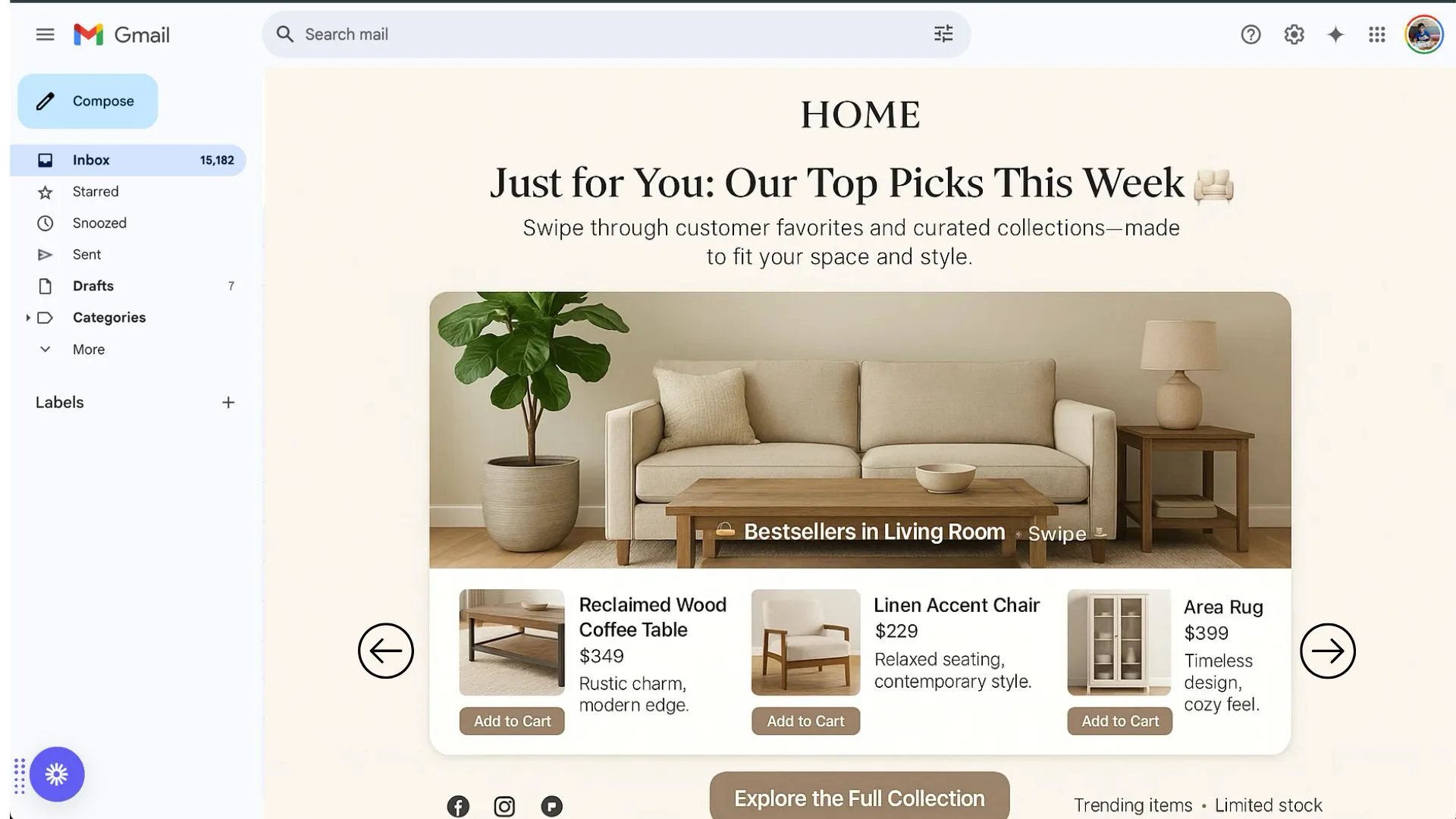
2. Real-Time Urgency: Unlike static emails, AMP content can be updated every time the email is opened. Imagine a live countdown timer showing the hours remaining for a flash sale, or an inventory counter for a highly popular item that updates in real-time. This creates a powerful sense of FOMO (Fear of Missing Out) and urgency, a massive lever during the holiday rush.
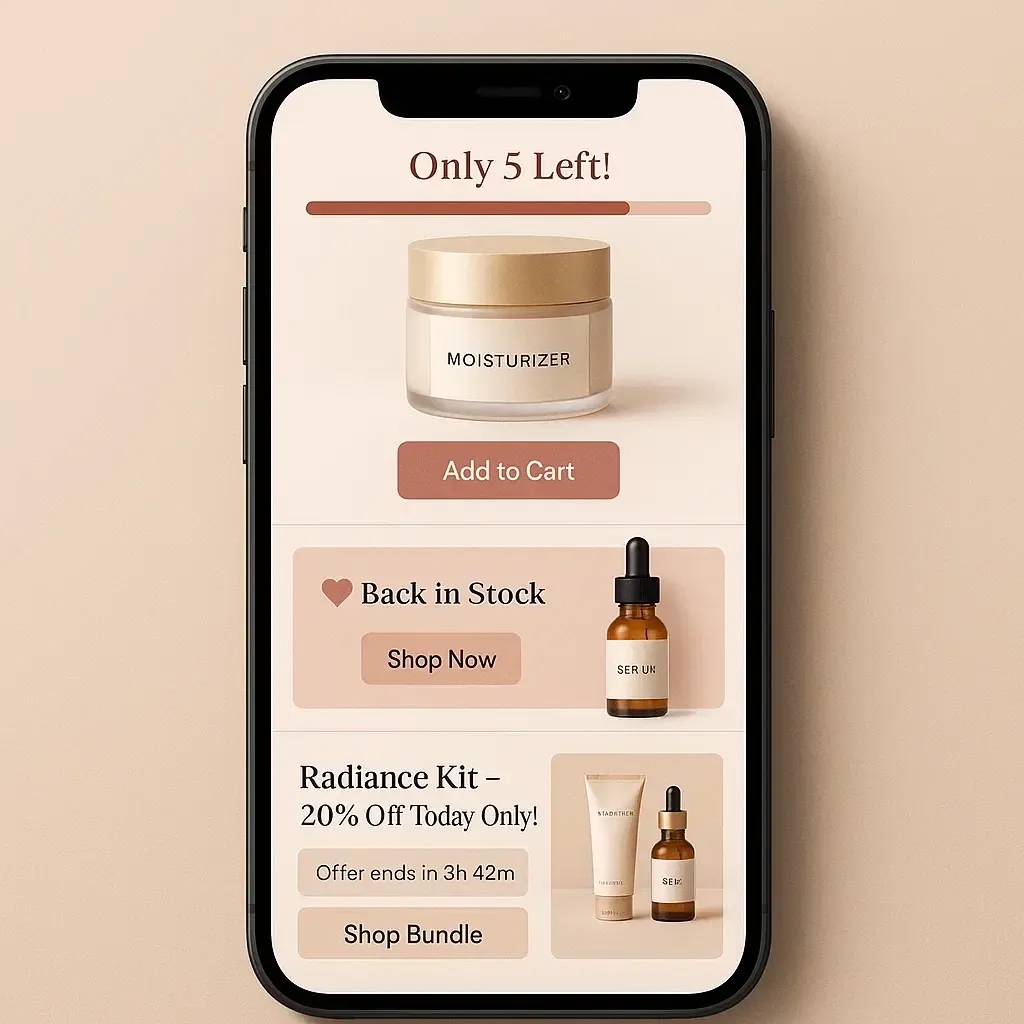
3. Enhanced Data Capture: Interactive elements, such as in-email quizzes, enable you to gather zero-party data (customer-declared preferences) instantly, fueling more effective subsequent personalization.
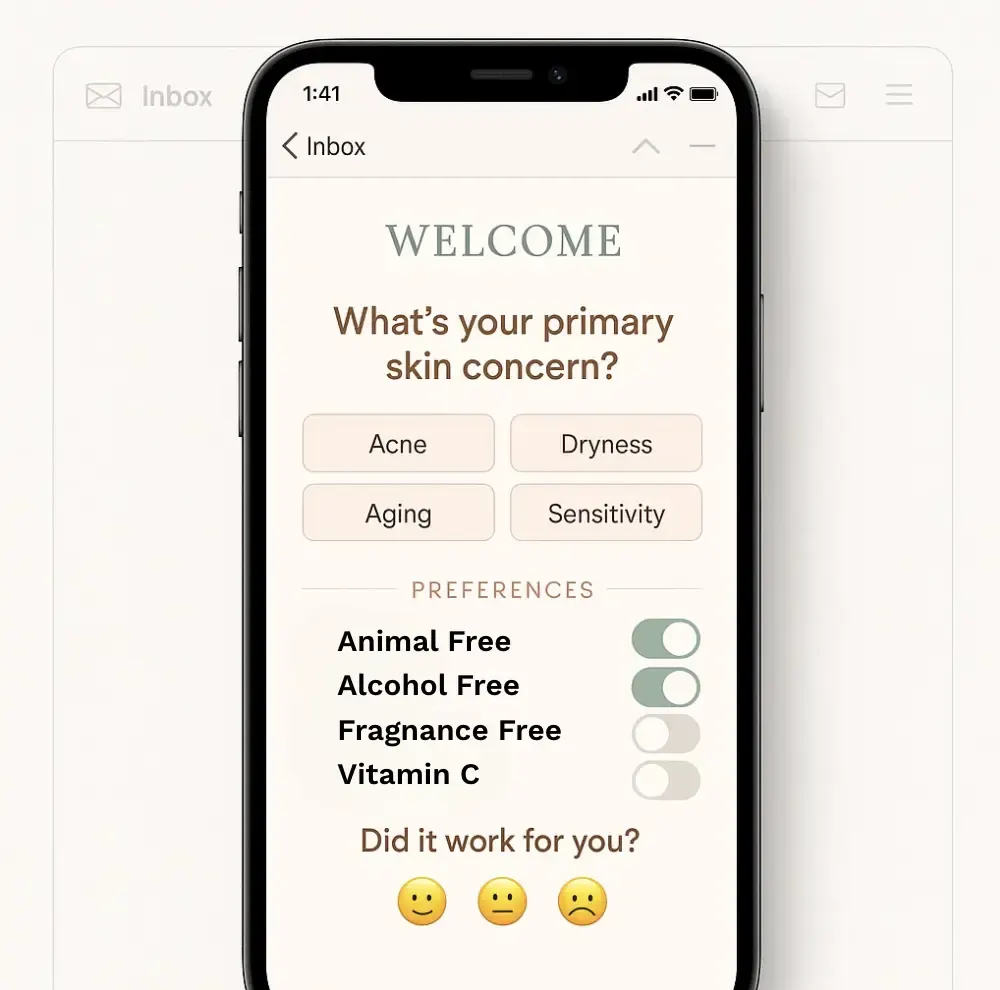
Essential Shoppable AMP Features for the Holidays
| AMP Feature | Holiday Application | Conversion Impact | Technical Detail |
| Product Carousels | Showcase multiple gift ideas or featured holiday collections in a swipeable format. | Boosts product discovery, click-to-conversion rate (CTC), and improves mobile experience. | Uses the amp-carousel element to load product images and links dynamically. |
| In-Mail Selectors | Let customers choose size, color, or a personalized inscription inside the email. | Simplifies the path to purchase and dramatically reduces cart abandonment caused by indecision on the product page. | Uses amp-bind and amp-selector to show/hide corresponding image variations based on user choice. |
| Zero-Party Data Collection | Collect valuable information like gifting preferences, budgets, categories, or style choices through quick in-mail questions. | Builds high-intent customer profiles, improves future targeting, and increases relevance of post-click experiences. | Uses amp-form to securely send user input to your CDP/ESP and update email content instantly. |
| Gamification Elements | Add holiday-themed in-email games like “Spin the Wheel”, scratch cards, mystery boxes, or instant-win rewards. | Increases engagement dramatically, boosts CTR, and drives repeat interactions throughout the holiday season. | Achieved using amp-bind, amp-animation, and amp-form to reveal rewards or trigger interactions. |
| Dynamic Forms/Quizzes | Allow customers to fill out a short Gift Finder quiz (e.g., “Budget?”, “Recipient Type?”). | Gathers valuable zero-party data, qualifies the lead, and ensures the subsequent click-through is highly relevant. | Uses amp-form to capture and send data back to your CDP/ESP instantly. |
Technical Considerations for Implementation
Successful AMP email execution requires a robust setup:
- The Fallback Imperative: Because not all email clients support AMP (e.g., Apple Mail, Outlook), every AMP email. Ensure this static version still offers a compelling, albeit less interactive, experience.
- API Integration: To enable real-time features and in-email cart actions, your Email Service Provider (ESP) must be tightly integrated with your Inventory Management System and your ecommerce platform’s Product API. This allows AMP components to fetch live data (stock counts, prices) and send actions (add to cart) directly.
- Whitelisting: Major providers like Google require brands to follow best practices and be whitelisted to send dynamic emails, ensuring quality and security. This is a critical prerequisite.
Beyond Personalization: Creating Hyper-Personalized Gift Guides
For your shoppable emails to be effective, their content must be perfectly tailored to the recipient. This goes far beyond simply using a customer’s first name. This is hyper-personalization, driven by rich data, machine learning (ML), and predictive AI.
The Data Foundation for Hyper-Personalization
To move from basic segmentation (e.g., gender, location) to truly hyper-personalized gift guides, you need to collect and analyze comprehensive customer data, managed through a Customer Data Platform (CDP).
| Data Type | Description | Gifting Application |
| Behavioral (First-Party) | Recent browsing history, past purchase history, category views, time spent on pages, and abandoned carts. | Predicts personal preferences and preferred price points. Example: A history of viewing premium tech accessories. |
| Psychographic (Zero-Party) | Results from in-email quizzes, wishlist data, stated gift recipient (e.g., ‘Mom’, ‘Coworker’), and budget declarations. | Provides the intention behind the purchase, guiding the AI on who the gift is for. |
| Predictive (AI-Driven) | “Gifting Affinity” score, churn probability, and next-best-product recommendation model. | Automatically suppresses irrelevant products/categories and promotes products with the highest likelihood of a holiday conversion. |
Building the Hyper-Personalized Gift Guide (The 1:1 Shopper)
Your personalized gift guide should feel like it was curated by a dedicated personal shopper, not an algorithm.
1. AI-Driven Product Selection and Suppression
- 1:1 Recommendations: Use collaborative filtering and deep learning models to predict products the user or their predicted giftee would most likely purchase.
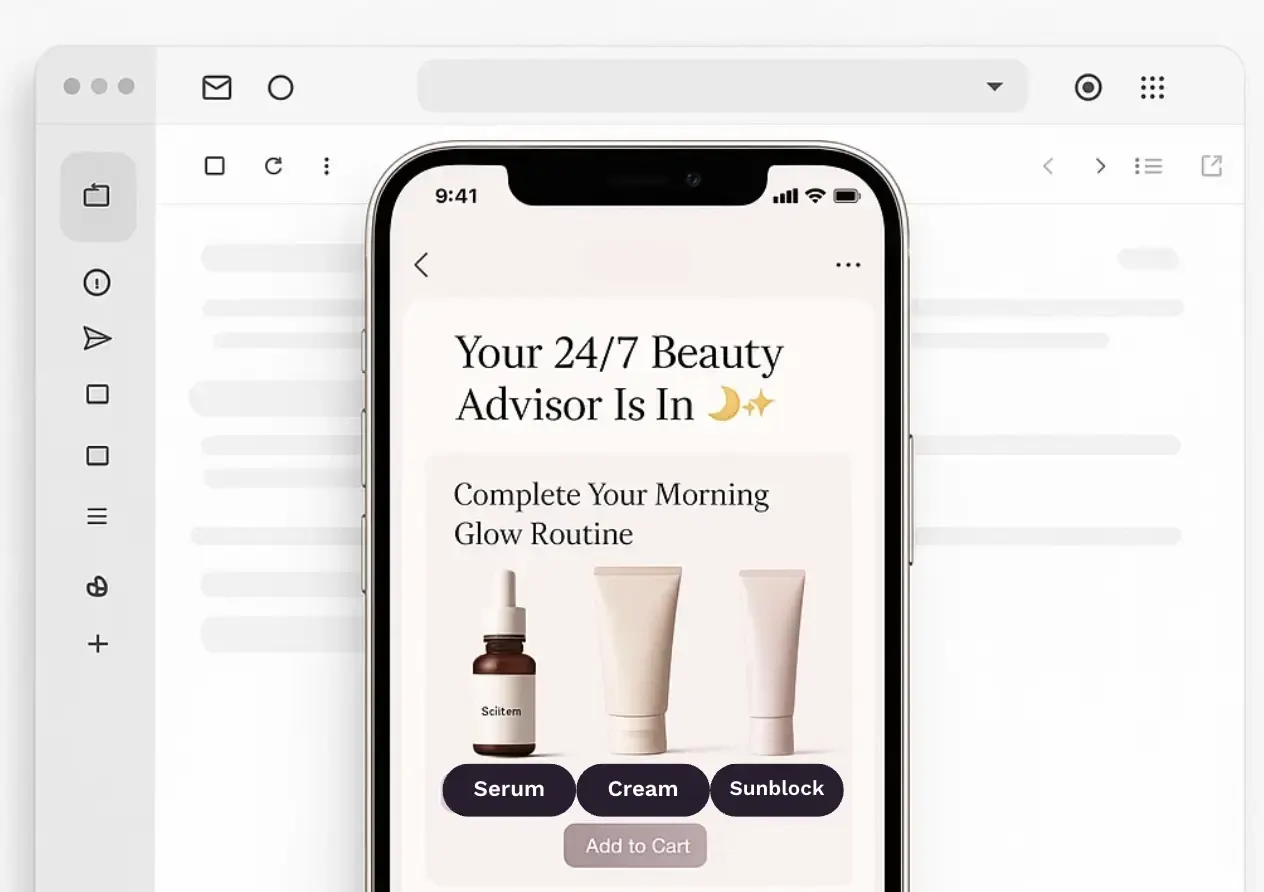
- Category Suppression: If a customer has never shown interest in ‘Home Goods’ or has only purchased from the ‘Men’s Outerwear’ category, the AI should automatically suppress all other categories to clean up the noise and focus the email’s attention.
2. Price-Point Alignment and AOV Optimization
- Dynamic Pricing Tiers: Dynamically adjust the products featured to align with the customer’s historical Average Order Value (AOV). A high-value customer receives a “Luxury Gifts Under $500” guide, while a new customer receives a “Top Stocking Stuffers Under $50” guide.
- AOV Boosters: Automatically embed a shoppable AMP block with a personalized “You May Also Need” item that is frequently bought with their primary recommendation, specifically designed to push the total cart value just over the free shipping threshold.
Scenario Example:
A customer, Sarah, has recently viewed running shoes, purchased a water bottle six months ago, and clicked “Under $100” in a pre-holiday AMP quiz.
| Personalized Action | Hyper-Personalization Engine Output | AMP Feature Used |
| Primary Block | “Top Gifts for the Serious Runner” (Focuses on fitness accessories, foam rollers). | Shoppable AMP Carousel |
| Secondary Block | “Recommended Restock: Your Favorite Water Bottle” (Based on 6-month repurchase cycle). | Real-Time Inventory & Price |
| Filter Adjustment | All featured products are dynamically filtered to under $100. | Dynamic Content Block |
Strategic Campaign Touchpoints for Maximum ROI
A single email won’t maximize holiday sales. You need a multi-touch campaign that uses interactivity and personalization at every stage.
1. The Early Bird Campaign (October/Pre-Black Friday)
- Objective: Gather Zero-Party Data and build anticipation.
- AMP Tactic: Send a hyper-personalized “Add to Wishlist” email. Feature products based on their past category views, but allow the user to immediately save them to a list via an in-email button.
- Data Activation: Embed a Dynamic Quiz Form (e.g., “Are you shopping for a partner, child, or friend?”). This data becomes the foundation for all gift guide recommendations moving forward.
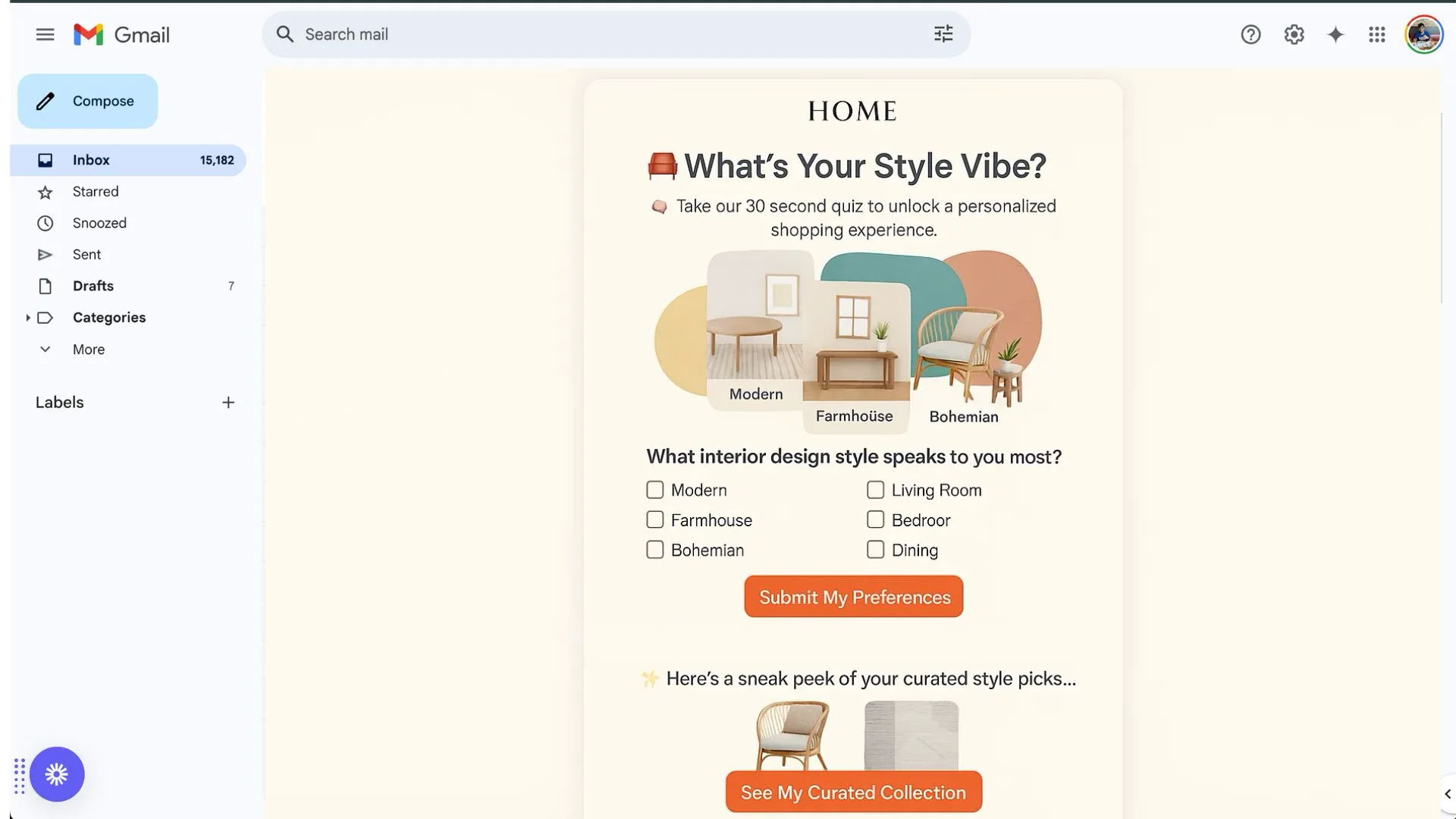
2. The Core Shopping Campaign (Black Friday to Mid-December)
- Objective: Drive immediate conversions and high AOV.
- AMP Tactic: This is the time for Shoppable Carousels and Real-Time Inventory Updates. The email acts as a functioning mini-store. Allow customers to view a discounted price, select their size, and hit ‘Add to Cart’ directly in the email.
- Data Activation: Use predictive scores to target high-propensity buyers with a higher-value personalized guide and low-propensity buyers with a strong, time-sensitive AMP countdown flash sale.
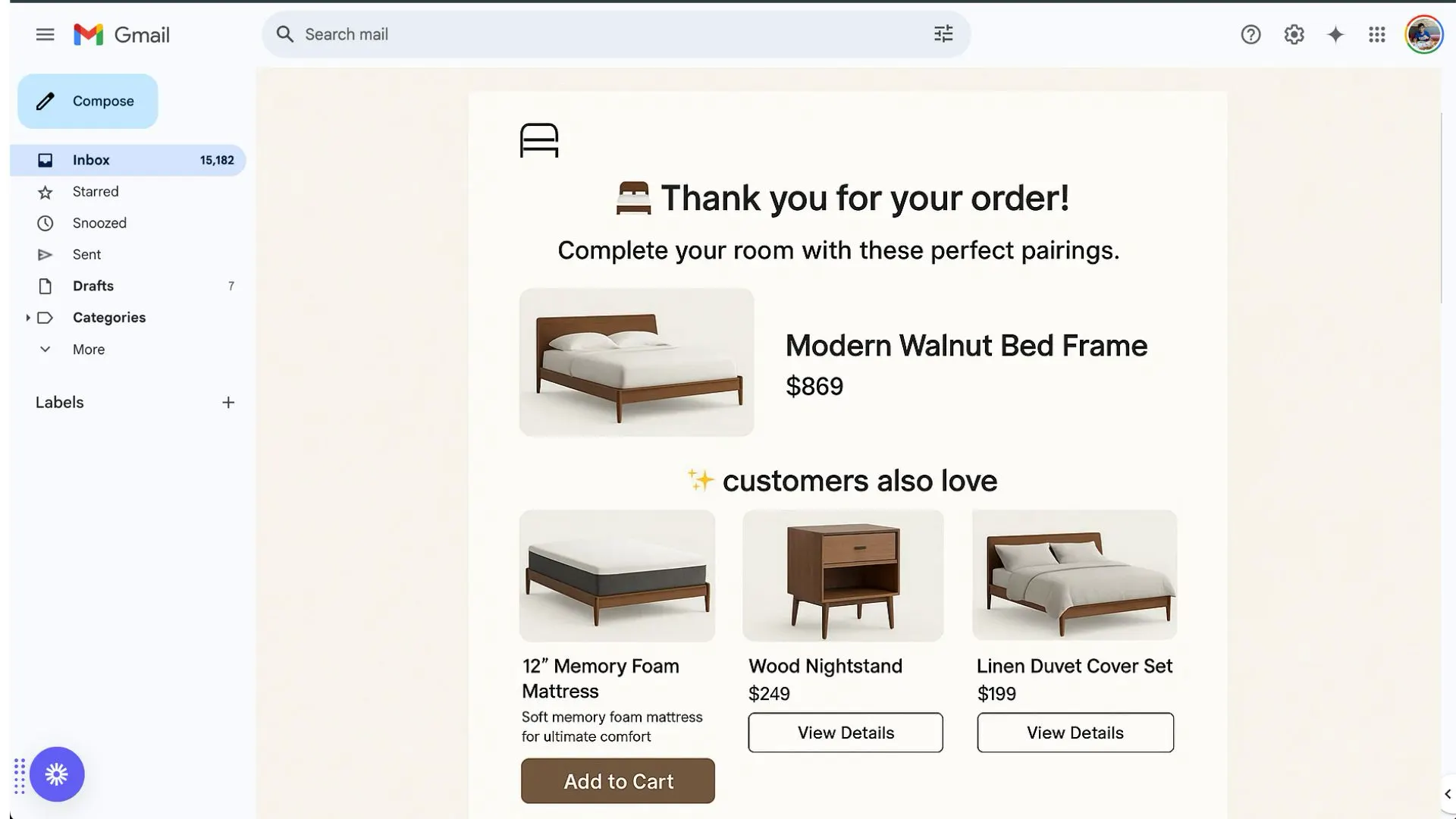
3. The Last-Minute Rescue (Mid-December)
- Objective: Convert procrastinators and prevent delivery disappointment.
- AMP Tactic: Use a prominent, live “Order by [Date] for Christmas Delivery” countdown. For customers who live near a physical store, offer a live Store Locator feature embedded in the email with real-time stock checks for pickup.
- Data Activation: Shift focus to digital products. Offer hyper-personalized e-gift card recommendations based on the recipient’s average gifting budget, not their personal AOV.
4. The Post-Holiday Loop (Post-Christmas to New Year)
- Objective: Retention, self-gifting, and data collection.
- AMP Tactic: Send an AMP email for easy returns/exchanges. Include dynamic forms that allow customers to schedule a pickup or print a label inside the email.
- Data Activation: Target those who browsed but didn’t buy during the rush with a “Treat Yourself” self-gifting sale. Collect in-email product feedback/reviews to refine product pages and improve next year’s holiday strategy.
Conclusion
The future of ecommerce is not just personalized; it is conversational and immediate. Traditional email marketing is passive; AMP-driven, hyper-personalized email is active.
By combining the technical capabilities of AMP for Email with a hyper-personalized, data-driven content strategy, you turn your customers’ inboxes into the most convenient and compelling shopping channel available. This synergy reduces the time-to-purchase from minutes to seconds, a critical advantage during the frantic holiday season.
This Christmas, don’t just send an email, send a dynamic, intelligent, and interactive experience that meets your customers exactly where they are. Reduce friction, increase engagement, and watch your conversions soar as you transform your holiday email marketing from a mere notification system into a powerful engine of conversational commerce.











